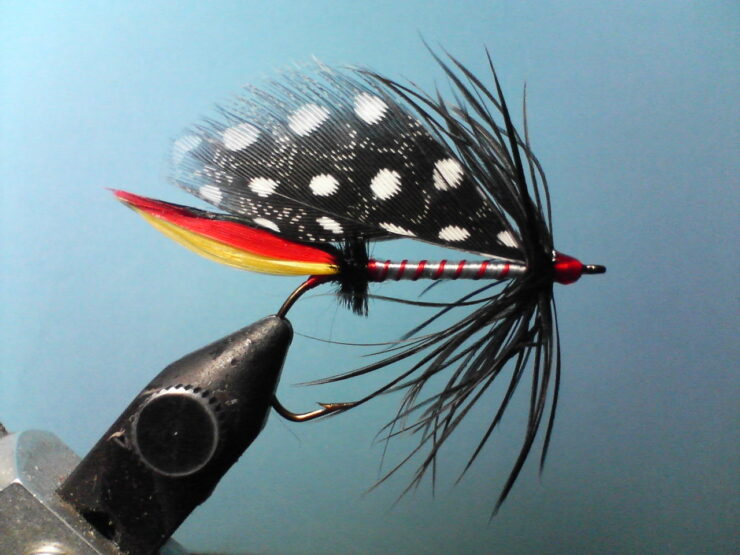The single question most often asked by novice fly fishermen is how do I choose the right fly? Thus, if you read the plethora of literature written on this topic, you would very likely come to the conclusion that in order to become a successful fly fisherman, you will need to carry an entire collection of flies.
Flies designed to precisely imitate the aquatic insects and/or baitfish that are hatching or inhabiting the streams, ponds, or lakes, that you intend to fish.
However, while this is certainly a sound approach, carrying copies of every possible fly pattern would leave your fly vest bulging at the seams and would weigh you down like an anchor.
Table of Contents
ToggleThe Different Types of Fly Patterns
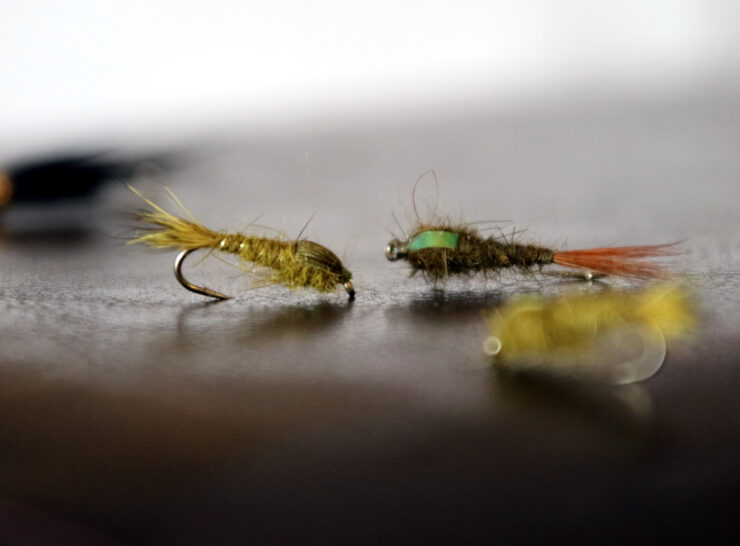
Thus, you should first be aware that all artificial fishing flies regardless of what fish species they are designed to catch can be first divided into two categories consisting of Attractors and Imitators. Then, they can further be subdivided into five more categories consisting of dry flies, wet flies, nymphs, and, streamers while terrestrials can be either dry or wet flies.
Furthermore, Attractor flies are defined as any fly pattern that consists of bright colors such as red, yellow, and/or green and which does not closely imitate any known aquatic or terrestrial streamside insect such as the famous Royal Coachman fly pattern. However, Imitator flies are just the opposite in that they are tied using materials that do closely imitate certain families and, even specific species, of aquatic or terrestrial insects such as Mayflies, Caddisflies, ants, inchworms, and beetles.
Then, to muddy the water, even more, Dry Flies are flies that have been tied using highly buoyant materials such that they float on the water’s surface while wet flies on the other hand are just the opposite in that they are specifically designed to sink beneath the water’s surface.
Next, we have nymph patterns that are specifically designed to resemble the nymphal stage of aquatic insects, and thus, they too are designed to sink while streamer patterns are specifically designed to resemble baitfish and thus they are often weighted. Therefore, over the years, fly tiers have developed terrestrial, dry fly, wet fly, nymph, and streamer patterns in both attractor and imitator patterns.
Fly Patterns: Attractors vs Imitators
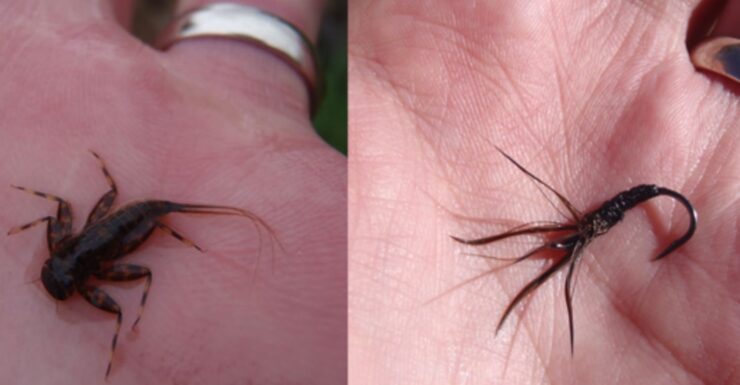
So, how does knowing this help you to choose the appropriate fly for any given time of year or time of day on any given stream or other body of water? Well, to start with, because fish have a relatively small brain, they learn to differentiate edible insects and baitfish from debris by observing their size, shape, color, and the minute movement of their gills and eyes.
Therefore, as a general rule, most fly fishermen use imitator flies during periods when a specific family of flies such as Mayflies or Caddis Flies is hatching, and then, they choose a fly from their selection that closely matches the hatching insects in both size and color. But, because fish have a relatively short memory, they can soon forget what these insects look like, and thus, they may or may not strike them during the periods between hatches.
Consequently, Attractor Flies are specifically designed to entice fish to strike them by incorporating certain colors such as red, yellow, and green in combinations that have been proven to trigger their feeding reflex. Thus, many experienced fly fishermen rely on attractor patterns to catch fish when there are no aquatic insects presently hatching.
Terrestrials, Dries, Wets, Nymphs, and Streamers
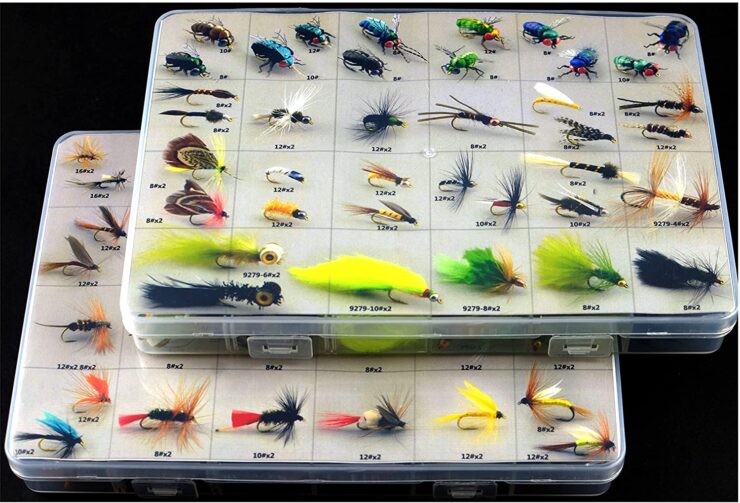
On the other hand, any stream, pond, or lake that is inhabited by aquatic insects is inhabited by them all year long even though the mature adults of each species only hatch once a year for a relatively short period of time.
But, their offspring, which exist in the nymphal stage, are available to the fish all year long and thus, nymph patterns are often the single most productive fly pattern available.
In addition, wet flies are another very effective fly pattern dating all of the ways back to the Romans. However, when they were first developed, local blacksmiths lacked the ability to produce fine wire hooks made from hardened steel.
Thus, their hooks were simply too heavy to allow their flies to float on the surface. But, because they represent a larger meal than most nymphs and because they do not require a fish to come to the surface to strike them, wet flies can be very effective; especially if used to imitate fallen Mayfly Spinners after a Spinner fall.
On the other hand, although dry flies are often the least productive type of fly pattern to fish with, they are also without a doubt the single most fun fly pattern to fish with because, not only is the fly fisherman able to observe his fly as it drifts on the surface of the current, he is often able to see the fish rise through the water column to strike the fly which can be extremely exciting!
Then, bridging the gap between wet flies and dry flies, we have Terrestrials which are fly patterns that are specifically designed to imitate terrestrial insects such as ants, inchworms, crickets, grasshoppers, and beetles.
However, some terrestrial fly patterns such as ants and inchworms are designed to suspend in the surface film or to float just below the water’s surface while others such as grasshoppers, crickets, and beetles, are designed to float on the water’s surface. However, regardless of which terrestrial fly pattern you choose, they can all be very effective during the warmer months of the year.
Last, we have streamer fly patterns which are specifically designed to resemble the size and shape of both freshwater and saltwater baitfish and crustaceans. Thus, while streamer patterns are often far less productive than nymphs, wet flies, or even terrestrials, they do tend to attract much larger fish due to the food versus energy equation.
How to Choose an Appropriate Fly Selection
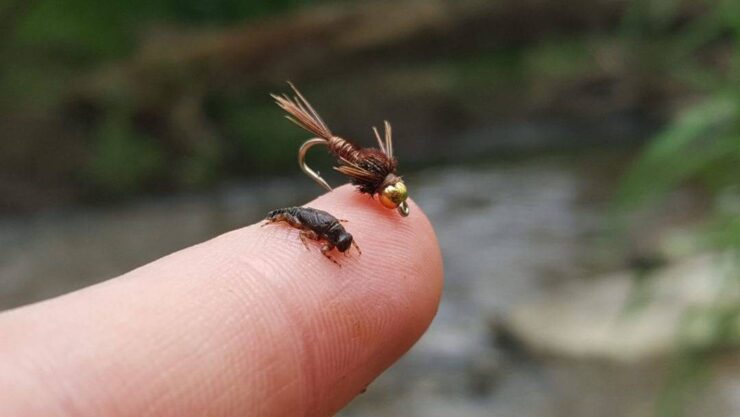
So, once again, how does know all of this help you to choose an appropriate fly selection for any given time of year for any given stream or other body of water? Well, the answer to that question is to first acquire separate terrestrial, dry fly, wet fly, nymph, and streamer fly boxes. Then, stock your terrestrial fly box with the aforementioned black and red ants, inchworms, earthworms, grasshoppers, crickets, and beetles.
Then, stock your dry fly box with a selection of attractor Mayfly patterns in the three known trigger colors by choosing patterns such as the Royal Wulff (red floss), the Tennessee Wulff (yellow floss), and the Carolina Wulff (green floss) or, Humpy patterns in the same colors in addition to stocking Stimulator patterns in red, yellow, and green.
Then, to complete your dry fly selection, stock your dry fly box with six imitator Mayfly patterns consisting of cream, yellow, green, grey, brown, and black by purchasing Light Cahills, Sulphurs Dunns, Blue Winged Olives, Adams, March Browns, and Black Gnats. In addition, most swiftly flowing streams also harbor large populations of Caddis Flies (aka Sedge Flies), and thus, a selection of Elk Hair Caddis patterns in red, yellow, olive, gray, brown, and black is also handy to have.
Furthermore, it is also helpful to be aware that this same system can also be applied to nymphs and thus, a good attractor nymph selection would be Royal Wulff nymphs, Pheasant Tail Sulphur nymphs, and green Golden Ribbed Hair’s Ear nymphs or, Firebug nymphs, Tellico nymphs, and Prince nymphs. Also, if you have Caddis Flies in your local waters, you might want to add a selection of Serendipity flies in red, yellow, and olive as well a selection of Copper John flies in red, copper, and green. Then, a good selection of imitator nymphs would be Light Cahill nymphs, Pheasant Tail Sulphur nymphs, green Golden Ribbed Hair’s Ear nymphs, Adams nymphs, March Brown nymphs, and black Golden Ribbed Hair’s Ear nymphs.
Last, in order to apply this system to streamer patterns, a good selection of attractor streamer patterns would be Royal Wulff streamers or Spruce Fly streamers along with Grey Ghost streamers while a good selection of imitator streamers would baby Brook Trout, baby Rainbow Trout, baby Brown Trout, Black Nosed Dace, and Conehead Sculpins.
So, while it is true that “matching the hatch” is a viable means of choosing an appropriate selection of dry flies, a far better method of choosing a selection of flies is to instead carry a general fly selection of attractor patterns in the three known trigger colors red, yellow, and green in addition to carrying a general selection of imitator patterns in cream, yellow, green, grey, brown, and black.
That way, you will have the ability to “prospect” with your attractor flies both above and below the surface and then, if the fish seem uninterested in bright colors, then you can try some of the more subdued colors by using one of your imitator fly patterns.
In addition, if you happen to run across a hatch, then you can also “match the hatch” by simply choosing a fly from your imitator selection that closely matches the Family, size, and color of the insects that you are seeing.
Or, if you are a trophy hunter, then large terrestrials or streamers are often the best way to go because, as fish grow larger, their energy requirements increase exponentially, and thus, the larger the meal, the more energy a fish gains from catching and consuming it. Consequently, truly large fish often completely ignore all but the largest aquatic insects and instead prefer to target large terrestrial insects and indigenous baitfish.
But, regardless of whether you prefer terrestrials, dry flies, wet flies, nymphs, or streamers, by carrying a general selection of both attractor and imitator flies, you will find that you are well prepared to fish anywhere in the world on any type of water at any time of year.
Adelaide Gentry, a seasoned kayaking enthusiast and expert, is the driving force behind KayakPaddling.net. With over a decade of experience navigating the world’s most challenging waterways, Adelaide combines her passion for adventure with a deep knowledge of kayaking to provide insightful and practical guidance for paddlers of all levels.
Related Posts:
- 15 Best Baitcasting Reel Under $100 2024 - Improve…
- 16 Best Kayak For Beginners 2024 - Kayaking Adventure Gear
- 17 Best Trolling Reels 2024 - Enjoy your Fishing Adventure
- 12 Best Beach Wagons & Carts 2024 - For All-Terrain
- 10 Best Fish Finders Under $200 2024 - Top Affordable Picks
- How to Stay Safe on Slow Moving Waters When Paddle Boarding?

